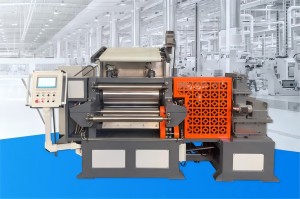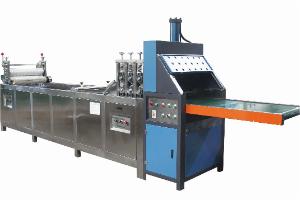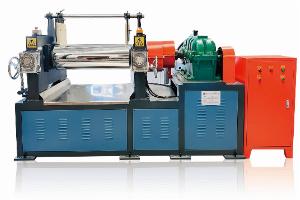
How Calendering and Mixing Mills Shape the Rubber Products We Use Every Day
2025-10-14
The Hidden Machines Behind Everyday Rubber
Every day, we touch and use rubber products—from the soles of our shoes to car tires, yoga mats, and even washing machine seals. But have you ever wondered how these rubber items are made so smooth, strong, and durable?
Behind the scenes, two powerful machines—Calendering and Mixing Mills—are doing the heavy lifting. Though they may sound technical, their purpose is simple: to mix, shape, and refine rubber so it can become part of our daily lives.
Let’s take a walk through how these machines quietly make modern life a little better.
The Mixing Mill: Where It All Begins
Think of a Mixing Mill as the “chef” in the rubber kitchen. It takes raw rubber and blends it with chemicals, carbon black, and other materials. The goal is to make a perfect rubber “recipe” with the right balance of flexibility, strength, and durability.
Inside the machine, two large rollers rotate at different speeds. As the rubber passes through them, it gets stretched, folded, and mixed repeatedly until it becomes a smooth, uniform compound.
This process may look simple, but it’s critical. If the mixture isn’t perfect, the final rubber product won’t perform well.
And here’s the fun part—just like cooking, a little temperature control makes all the difference. The rollers can be heated or cooled to make sure the rubber gets the perfect texture.
The Calendering Mill: Turning Rubber Into Sheets
Once the rubber is mixed, it’s ready for calendering—the process of pressing it into flat sheets. The Calendering Mill does exactly that.
Imagine rolling out cookie dough, but with precision measured in millimeters. The calendering machine uses several heavy rollers to squeeze and smooth the rubber into thin, even layers.
These sheets are then used to make all kinds of products: conveyor belts, flooring, tires, and waterproof membranes. The calendering step ensures every piece looks clean, feels uniform, and performs reliably.
Why These Machines Matter More Than You Think
Even though Calendering and Mixing Mills work quietly in the background, they play a huge role in shaping the quality of everything we use.
Here’s why they matter:
-
Consistency: Every batch of rubber feels and behaves the same.
-
Efficiency: They help manufacturers produce large volumes quickly.
-
Durability: Properly mixed and calendered rubber lasts longer and performs better.
In short, these machines turn raw materials into dependable products we trust every day.
From the Factory to Daily Life
When you step on a yoga mat, drive your car, or open a washing machine door, there’s a good chance Calendering and Mixing Mills were involved somewhere in the process.
In automotive factories, these machines help create tire layers that stay strong under pressure. In the construction industry, they make waterproof sheets that protect roofs and walls. And in sports, they produce durable flooring that can handle every jump and sprint.
They may not be visible in daily life, but their influence is everywhere.
Choosing the Right Calendering and Mixing Mill
For manufacturers, selecting the right machine means more than just buying equipment—it’s about investing in stable production and consistent quality.
A good China manufacturer and supplier should offer:
-
Reliable machinery built for continuous operation.
-
Energy-efficient designs with precise control systems.
-
Full support from installation to maintenance.
That’s why many global companies choose experienced producers like Quanzhou Sanxing Machinery Industry And Trade Co., Ltd., who combine technical expertise with strong after-sales service.
The next time you see a smooth rubber floor or drive on a quiet road, remember that Calendering and Mixing Mills helped make it possible. These machines transform raw rubber into the strong, flexible materials that power our everyday lives.


